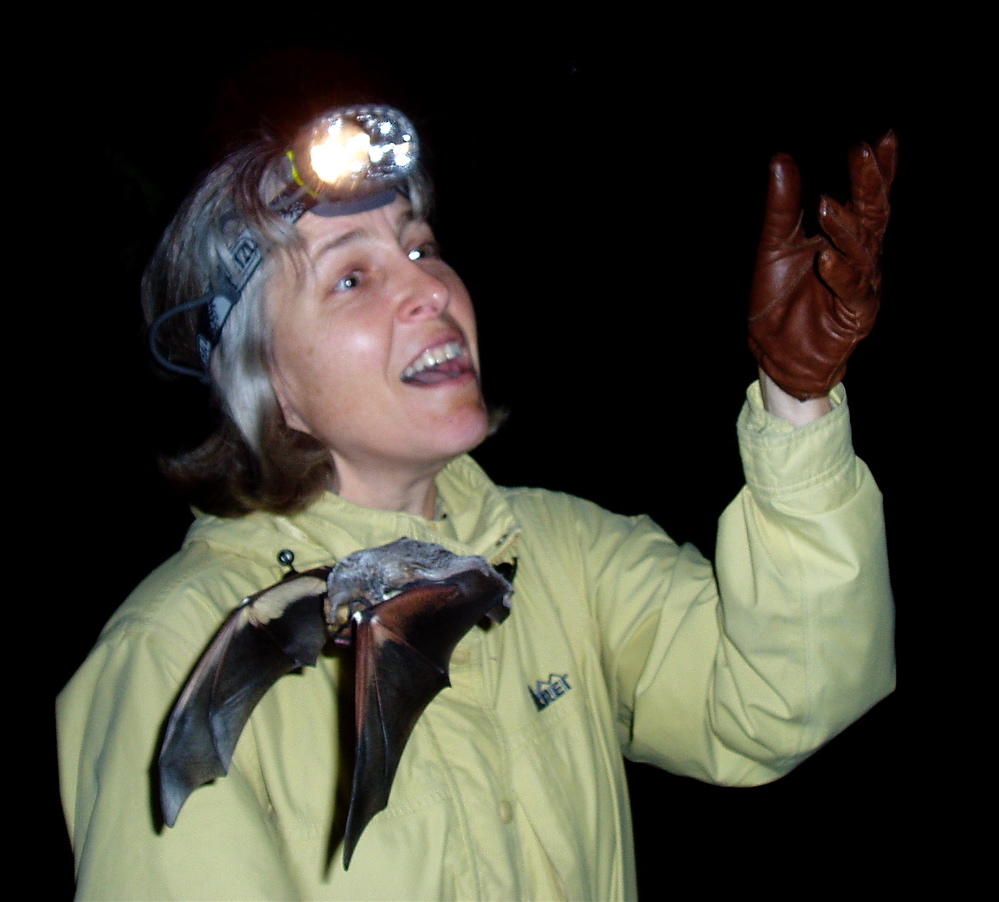2009 bat meeting update
I'm back from my fifth annual bat meeting in Portland and here's my semi-regular update with the highlights. This picture is the lovely logo created for this year's meeting by Willy Gibonney.
First the bad news. Bats continue to be killed at wind turbines and wiped out by White Nose. I attended one session describing roosts in New Hampshire that were unaffected until last year, and then were almost completely wiped out in one year. This was the first time I actually cried during a scientific presentation. The situation is so grim that people are actually considering culling bats, that is proactively wiping out bats in caves in an attempt to contain the epidemic. Tom Hallam, a professor here at UT, gave a paper with mathematical models showing that culling would have no effect on the spread of the disease. So far White Nose has only been seen in the northeast, though it's probably already here in Tennessee, but we don't understand it well enough to predict how far south or west it will travel. From my understanding, it appears likely that the fungus is spread both by humans and by bats. So if you're a caver, please try not to go into caves until we have a better understanding of this terrible situation. The US government has just allocated 1.9M$ for research, which will help. According to the Fish & Wildlife service the latest information will be available here.
There was somewhat better news on the wind energy front. Ongoing research has shown that since bats are more active at lower wind speeds, when turbines aren't generating much income, the technique of "feathering" turbine blades does reduce bat mortality. Feathering means turning blades into the wind so they turn slowly. The sweet spot is evidently around 5 m/s of wind speed. Preliminary models show that turbines that are not "cut in" to the grid until winds are at 6.5 m/s during bat migration times would represent only about 1% of total annual revenue loss. You can read the report from Ed Arnett and others yourself. And kudos to Iberdrola Renewables for being so cooperative and supportive of this important research, unlike other wind energy companies.
Aaron Corcoran won the student paper competition with his ultra-cool report on tiger moths jamming bat sonar (videos here.) I also presented my master's thesis results in the student competition. Student presentations are all given on the first day of the conference, with no concurrent sessions, so the whole audience may be watching -- maybe 350 people or so. I was very nervous and since my talk wasn't until 4pm I couldn't really focus on the other student papers, although I remember Aaron's and a few others. Of course I did just fine and once I was finished I was able to enjoy the rest of the conference. It is a really great group of people, and after 5 years of this many of them are my friends. Attending NASBR is one of my favorite parts of the year. We were in Portland, so I also got to visit Powell's books for the first time, and go beer tasting at the Deschutes brewery. Next year will be in Denver. I hope you'll be able to join us!


